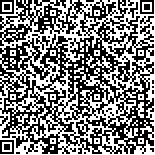下载中心
优秀审稿专家
优秀论文
相关链接
摘要

鉴于下一代重力卫星设计中利用更高精度的激光测距技术代替微波测距,对激光测距提高地球重力场探测精度的问题进行了讨论。通过高精度的动力学重力场模型反演方法,推导了线性化的星间变率公式,并以一定的权融合卫星精密轨道与星间变率数据。通过模拟计算结果可知,当卫星轨道、定轨精度、加速度计精度与Gravity Recovery and Climate Experiment(GRACE)相同,星间变率精度依次从1.0×10-6 m/s提高到5.0×10-7 m/s、1.0×10-7 m/s、5.0×10-8 m/s、1.0×10-8 m/s时,累积大地水准面误差则在120阶时依次从85.14 cm降低为33.09 cm、7.33 cm、3.70 cm、3.59 cm。结果表明当采用高精度的激光测距后,采用低低卫卫跟踪模式,地球静态重力场模型的探测精度有望比GRACE提高1个量级。当激光测距精度提高至10 nm/s时,计算结果与精度为50 nm/s的计算结果无明显差别,这表明过高的星间变率测量精度相对于其他指标而言有冗余。本文建议在其他测量技术精度未有提高的前提下,只需将激光测距的精度提高至50 nm/s即可。
The critical technology of the Gravity Recovery And Climate Experiment (GRACE) satellite measures the change in the relative velocity between two low-orbit satellites. The static gravity field and the time variable gravity field can be estimated by the inter-satellite range-rate. Middle and high orders of gravity can obtain high accuracy. With practical consideration of the wide application of the time-variable gravity field, precise detection of related geophysical phenomena, such as ice sheets, ground water storage, and change in global sea level, is achieved provided that the measurement accuracy of the gravity satellite can be improved. Therefore, several research institutions have developed similar GRACE satellites before the original GRACE satellites crash. China is also stepping up research and development in this field.
This paper discusses whether laser range measurement can improve the detection accuracy of the earth gravity field on the basis of the design of next-generation gravity satellites by using high-precision laser ranging technology instead of microwave ranging. A linearized inter-satellite range-rate formula is derived by using the high-precision dynamic gravity field model inversion method. Satellite orbital perturbation theory established the functional relationship between the observation of the two satellites in terms of the speed difference in the direction of the component with geopotential coefficients, the initial state parameters of the satellites, and the scale and bias parameters of an accelerometer. The function is linearized, and the linear equations of inter-satellite variation are obtained by discarding the smaller quantity above two orders.
The normal equation is not solved if only the observed inter-satellite range-rate is used. When the two satellites after a previous one are used, the state transition matrix is almost the same, and the equation is rank-deficient. Therefore, the underdetermined equations can be solved with precise satellite orbit data. The observed precise satellite orbit data are sensitive only for a low order of the gravity field and have poor results at a high order; thus, we must find the best weight to combine the two types of data. Therefore, the inversion of the satellite gravity field based on the weight between precise orbit data with inter-satellite range-rate data is studied. It is solved for the precise satellite orbit data by using the dynamic method, which is linearized based on Newton’s second law of motion. The difference between the reference orbit and the actual satellite orbit is established with the state transfer matrix and parameter sensitivity matrix. The reference and actual orbits are calculated by using the eighth-order Adam method, and the initial orbit is calculated by the 10th-order Runge-Kutta method. The designed orbit parameter is the same as that of the GRACE satellite for easy comparison. The reference orbit uses the EGM96 model, and the actual orbit selects the EGM08 model. Each arc length is 6 hours, and its normal equation is established. One month of data are used for computation, and the establishment of the final normal equation is established by superpositioning the normal equations of all arcs. The matrix is computed by using the LU decomposition method. In Example 1, the KUALA curve shows that the calculation error with the error-free model is approximately five orders of magnitude smaller than the difference between the EGM96 and EGM08 gravity models, thereby confirming the accuracy of the program presented in this paper. Some simulation examples are calculated to analyze the effect of laser ranging on the accuracy of the Earth’s gravity field recovery. Simulation results show that when the accuracy of the inter-satellite range-rate is improved from 1.0×10-6 to 5.0×10-7, 1.0×10-7, 5.0×10-8, and 1.0×10-8 m/s, the accumulated geoid error at the 120th order is reduced from 85.14 cm to 33.09, 7.33, 3.70, and 3.59 cm. Therefore, the accuracy of the Earth’s static gravity field model, which is recovered by the satellite-to-satellite tracking in the low-low model, is expected to be one order of magnitude higher than that of GRACE after high-precision laser ranging. The KUALA curve shows that the static gravity field with the design accuracy of GRACE can be retrieved to the order of 90. However, when the accuracy of the inter-satellite range-rate is increased to 5.0×10-8 and 1.0×10-8 m/s, it can be completely recovered to the 120th order. The inter-satellite range-rate of 1.0×10-8 m/s has redundant measurement accuracy given that the two results are similar.
Therefore, if the measurement accuracy of next-generation Chinese gravity satellites does not improve, then we recommend improving the accuracy of the inter-satellite range-rate to 5.0×10-8 m/s, thereby achieving a relevant breakthrough.

